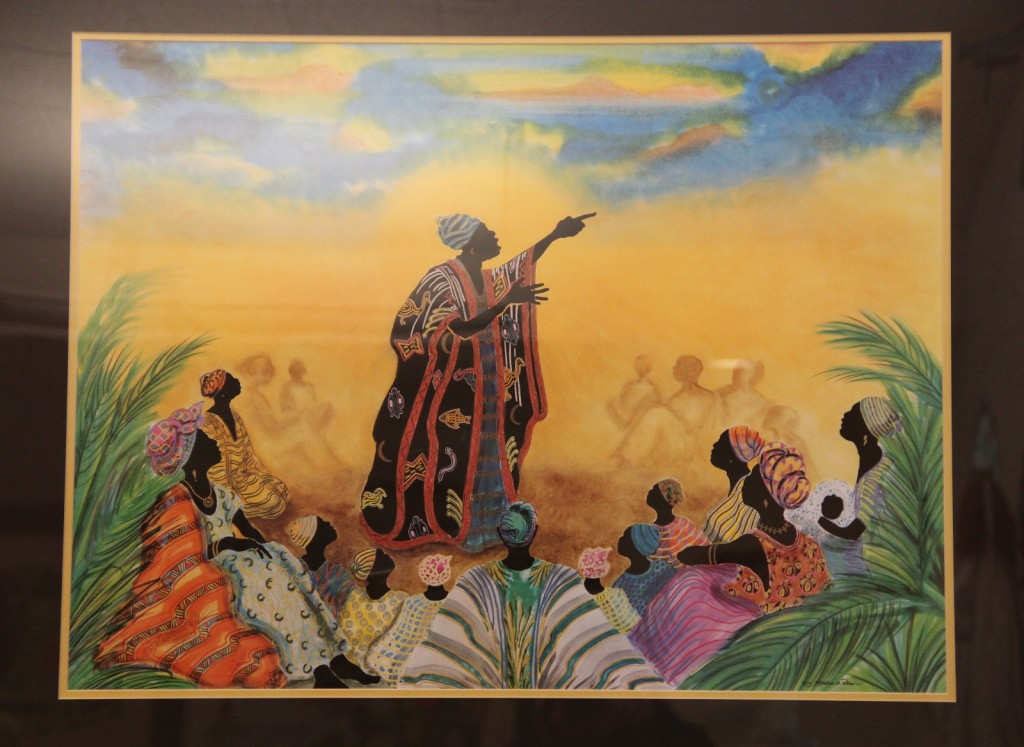The story that got me thinking about this recently was a porque tale. I had read it with my daughter to help understand the porque form for a Girl Scout project. Then I found the same porque embedded in a text I was assigned to read for school. But it wasn't the same at all. Both explained the same thing, and both are from the same part of the world, but they are incredibly different. If you are not familiar with porque, it is the name for stories that explain why something is, or how it came to be. These types of stories are extremely varied, from ones probably familiar to most of my readers such as the Biblical tale of the expulsion of Adam and Eve from the Garden of Eden, to less familiar ones like the one I am going to discuss today.
 |
| Photo of this African breed of tortoise and further information about it's natural history here. |
In Things Fall Apart we are presented with one of the characters telling the story of tortoise There was a famine in the land and tortoise heard of all the birds being invited to a great feast in the sky. Tortoise convinced the birds to take him with them so that he too could partake in the feast. But he tricked them and then ate most of the feast himself in his gluttony. He was now too heavy to fly back to earth on the wings he had built, so he asked the birds to tell his wife to bring all the soft things out of his house for him to jump down from the sky onto. The birds were angry with tortoise and instead told her to bring out all the hard things. From up in the sky tortoise could see she was bringing things out, but couldn't make out what the things were. When she seemed done, he jumped down. Landing on all the hard things broke his shell into pieces. A local medicine man was able to glue his shell back together and save his life, but the cracks remain to this day.
In the African Folktales collection the story of tortoise is a little bit different. Tortoise and his wife were very good friends with Vulture. Vulture often came to visit them at their home. One day Tortoise asked his wife why they never visited Vulture at his home. Vulture lived a great distance away, way up in the mountains. So tortoise devised a plan. He had his wife wrap him up in a parcel that she told Vulture was tobacco that they would like him to trade at the market for them. Vulture was a good friend, so he agreed to take the package. While he was flying, tortoise called out to him, saying, "Look it is I Tortoise and I have come all the way up here to visit you at last." Vulture was so startled that he dropped the parcel with tortoise in it. When tortoise hit the ground his shell cracked, and it never fully healed. And that was the end of the visits between tortoise and vulture.
There are some obvious differences between the two tales, but some clear similarities as well. Both explain the same thing of course, but go about it in different ways. In both cases we see tortoise interacting with birds and falling from the sky to break his shell. In both cases the fall is the result of some trickery on the part of tortoise. In the first case he is quite the trickster, convincing the birds to take him with them, and then managing to steal almost all of the feat that would have generously fed them all. In the other case tortoise resorts to trickery to try and do a much nicer thing. Both stories not only explain why tortoise appears as he does, but also serve as a warning to listeners/ readers to be honest.
Many things play into the differences in the tales. As we've discussed, they are markedly similar, so why are they so different? Regional variations surely play a role. But the dynamic of the oral tradition is part of what molds that as well. It is anthropologically probable that both stories have developed out of a common story. Perhaps one of these tales is more similar to the original. Perhaps a visitor to one area long ago heard the story while trading and took the story home, but couldn't remember it quite correctly, so it became something similar but different. The children's game of telephone demonstrates quite easily how mishearing something can result in a completely different story eventually. The role of the story teller is an important one. For the longest time they were the only keeps of the past. Still today they play a very prominent and important role in some communities. Accurately memorizing stories of their people by heart is an immense honor.



No comments:
Post a Comment